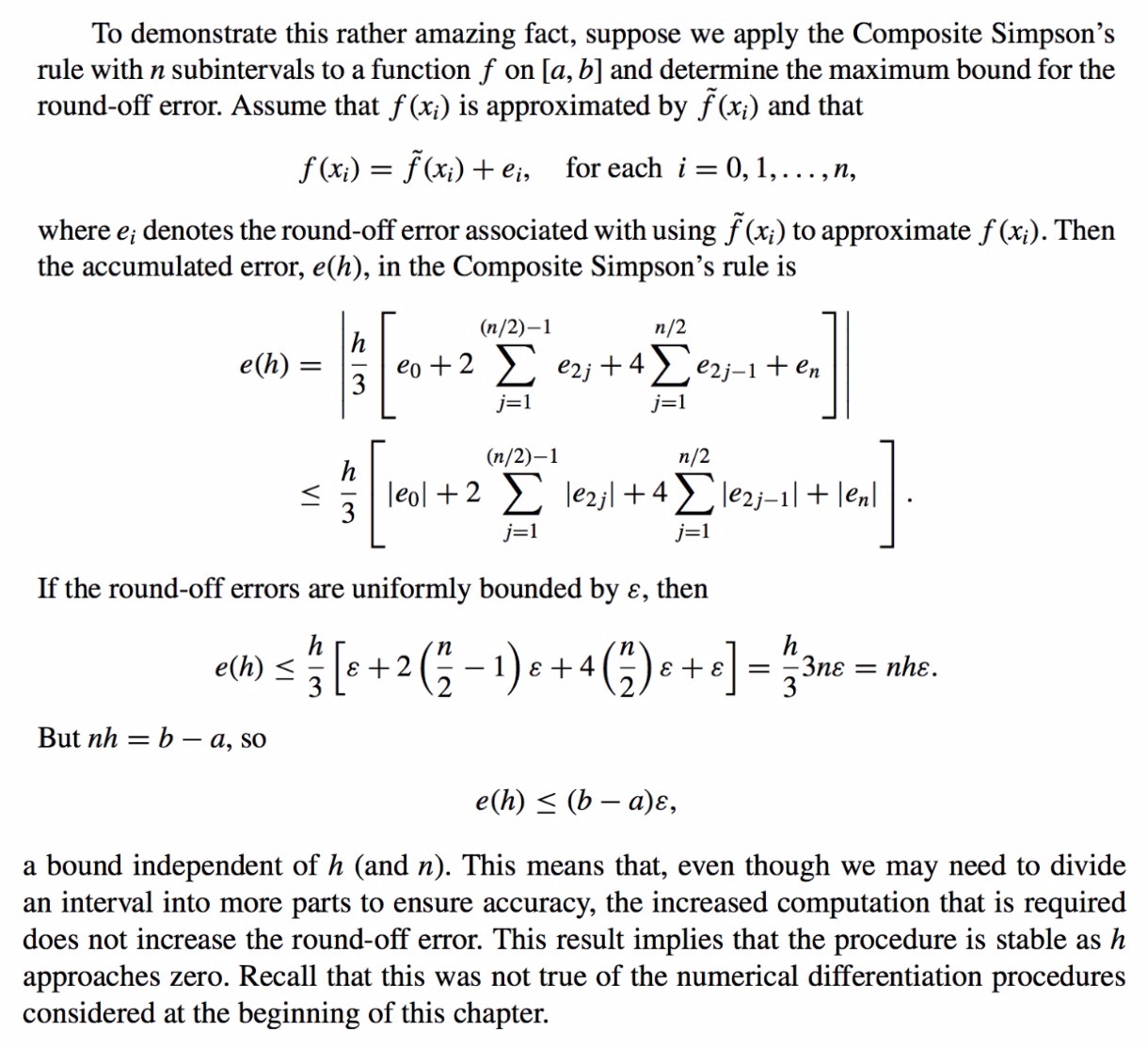Table of Contents
Composite Rules
- What?
A piecewise approach to numerical integration that uses the low-order Newton-Cotes formulas. - Why?
- The Newton-Cotes formulas are generally unsuitable for use over large integration intervals.
- High-degree formulas would be required, and the values of the coefficients in these formulas are difficult to obtain.
- Newton-Cotes formulas are based on interpolatory polynomials that use equally-spaced nodes, a procedure that is inaccurate over large intervals because of the oscillatory nature of high-degree polynomials.
-
- Notice:
- \(h = \dfrac{b − a}{n}\) and \(x_j = a + jh\)
Composite Simpson’s rule
- Composite Simpson’s rule:

- Error in Comoposite Simpson’s Rule:

Error \(\ \ \in \ \ \ \mathcal{O}(h^4)\)
- Theorem [Rule and Error]:

- Algorithm:

Composite Newton-Cotes Rules
- Composite Trapezoidal rule:

- Composite Midpoint rule:

Round-Off Error Stability
- Stability Property:
An important property shared by all the composite integration techniques is a stability with respect to round-off error.
The round-off error does not depend on the number of calculations performed. - Proof:
